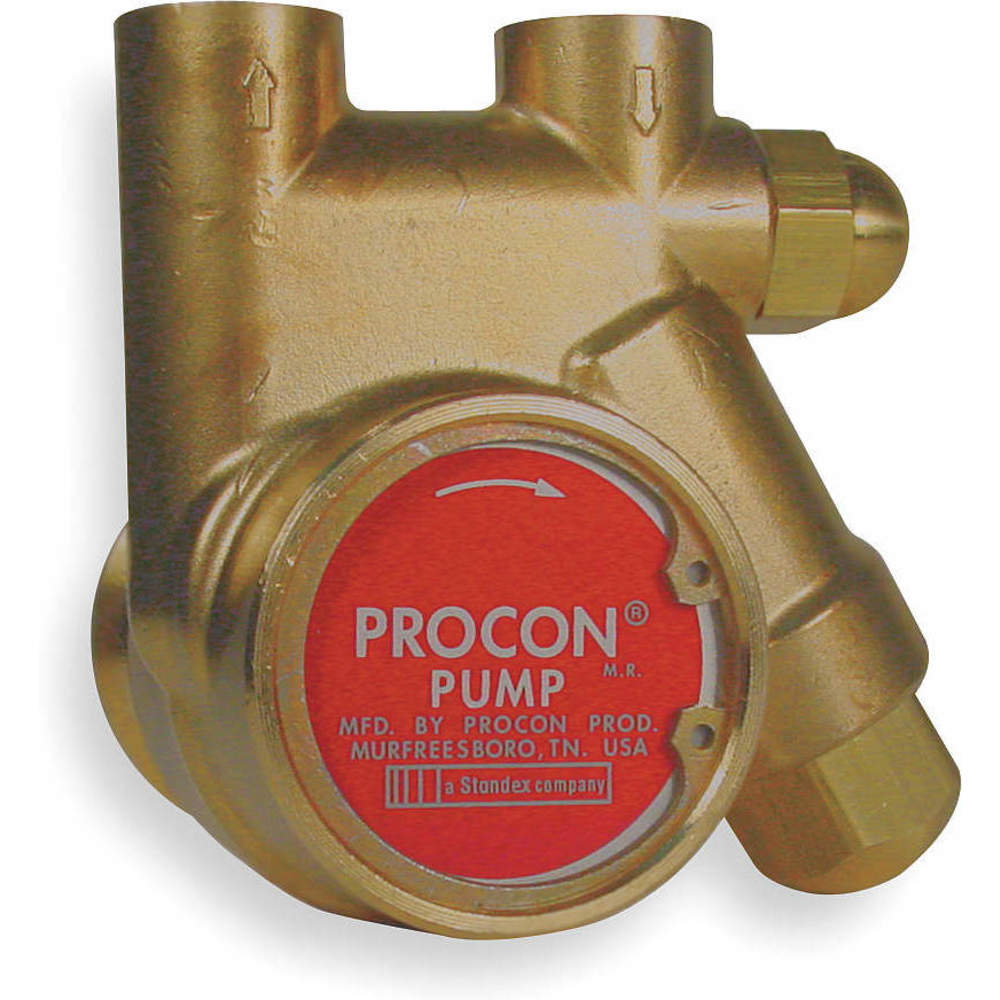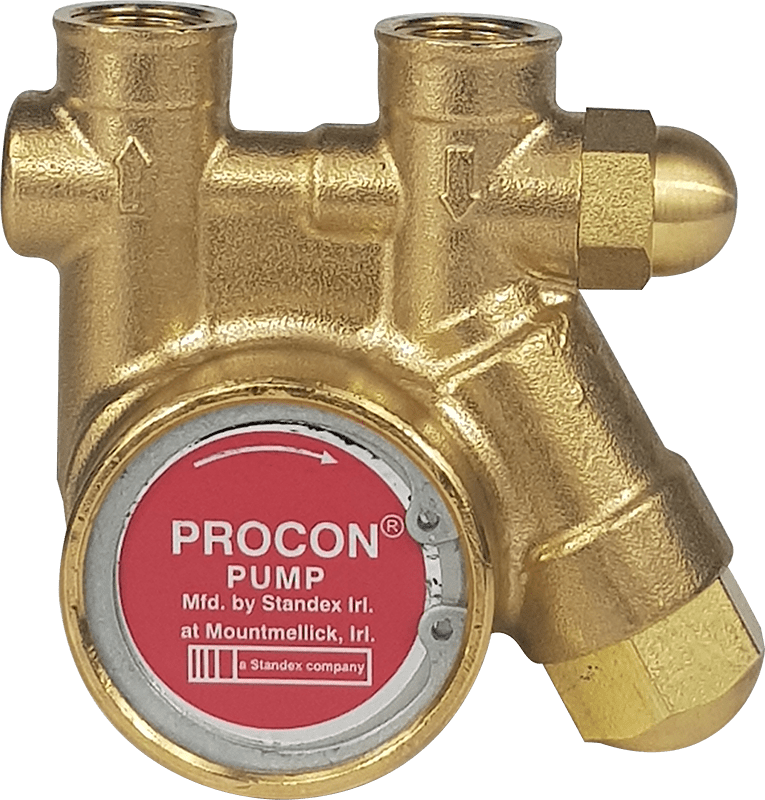Procon 111A140F11AA rotary vane pump is ideal for pumping and transferring liquids from one location to another in industrial processes and systems. It is used in chemical dosing, beverage dispensing and food processing.
Working Mechanism:
- Rotary vane pumps operate through the rotation of vanes within the pump chamber.
- As the rotor spins, centrifugal force causes the vanes to slide in and out, resulting in the creation of expanding and contracting volumes.
- This unique movement facilitates the suction of fluid or gas into the pump, followed by compression, and finally, the discharge through the pump outlet.
Features:
- This pump rotates in a clockwise direction during operation and has internal components made of carbon to provide self-lubrication for smoother operation.
- It offers a non-balanced ceramic / carbon seal type for effective sealing between moving parts.
- This pump has EPDM / nitrile elastomers for sealing properties and has a bypass Ultem valve type to control fluid flow.
- It allows clamp-on mounting for secure and straightforward installation.
- This pump includes an integrated strainer for providing protection against debris that could damage the pump.
- It further offers a 3/8 inch NPT port hole for quick and easy connection in fluid system
- This rotary vane pump further features brass construction to ensure aesthetic appearance and corrosion resistance.
Compatible Accessories:
- Procon 1113 V-Band Clamp: It provides a secure and reliable seal, making it ideal for fastening two cylindrical components together.
Frequently Asked Questions:
Q. How can I optimise the performance of a rotary vane pump?
A.
- Ensure proper maintenance and regular lubrication to reduce wear and extend the pump's life.
- Use the correct type of oil recommended by the manufacturer for lubrication.
- Avoid pumping corrosive or abrasive fluids without proper protection or compatible materials.
- Keep the pump clean and free from debris to prevent damage to the vanes or other internal parts.
- Operate the pump within its specified pressure and temperature range.
Q. What is the difference between single-stage and multi-stage rotary vane pumps?
A. Single-stage pumps have one set of vanes, while multi-stage pumps have multiple sets for increased pressure capabilities
Q. What is the priming process for a rotary vane pump?
A. Rotary vane pumps are generally self-priming and can evacuate the air or fluid from the system and create the required vacuum without the need for external priming assistance.
 Change Country
Change Country

